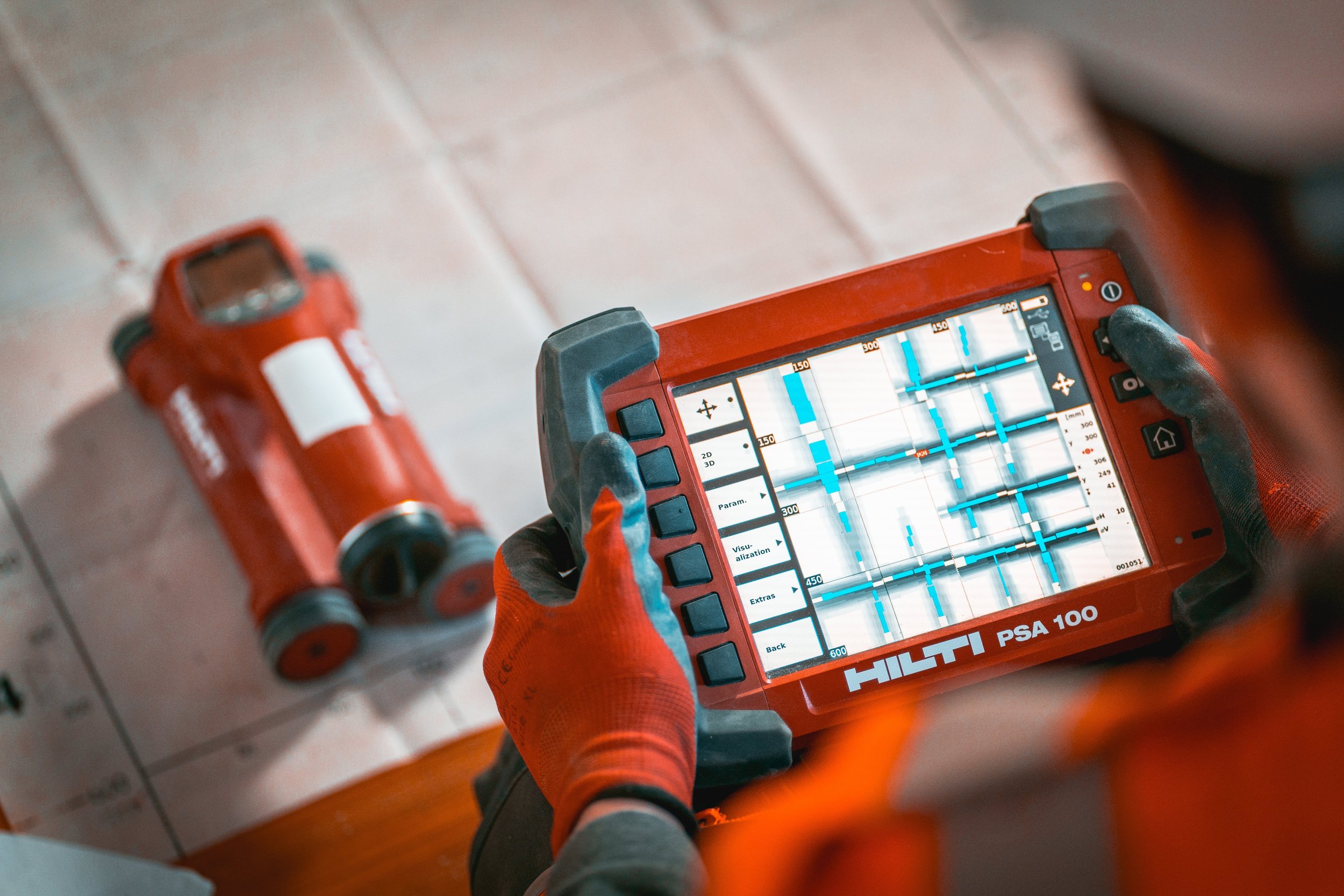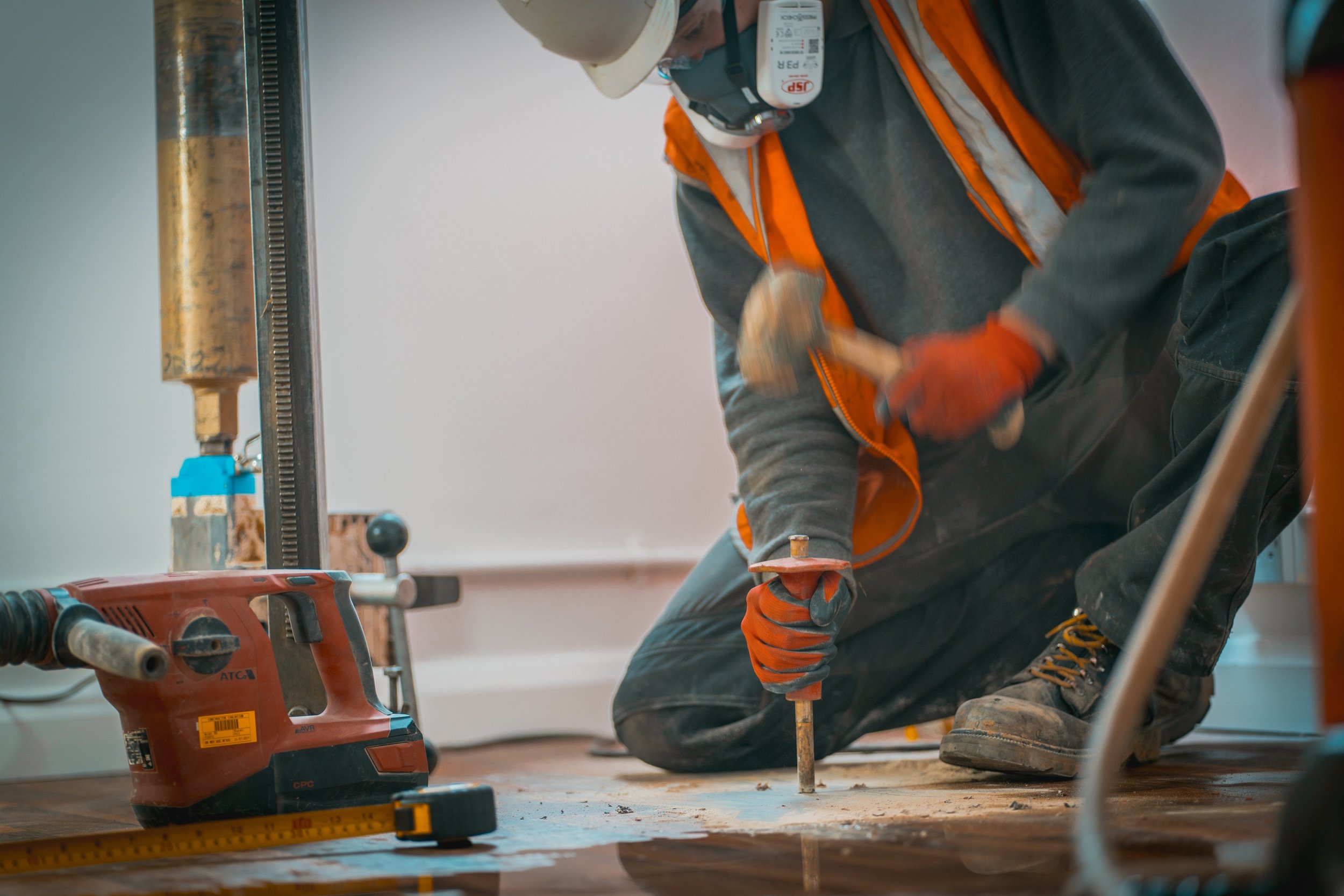
Concrete Cover & Carbonation Testing
Concrete Cover Testing
Concrete cover refers to the depth of concrete that protects the reinforcement bars (rebar) embedded within a concrete structure. This cover is crucial as it helps prevent corrosion of the rebar, which can significantly affect the structural integrity of buildings and infrastructure over time. Adequate concrete cover is essential for durability, ensuring that structures can withstand environmental factors such as moisture, temperature fluctuations, and chemical attack.
Importance of Adequate Concrete Cover
Protection Against Corrosion: The primary purpose of concrete cover is to shield the rebar from moisture and aggressive agents, reducing the risk of corrosion.
Structural Integrity: Insufficient concrete cover can lead to structural weakness, increasing the likelihood of cracks and failures in the concrete.
Compliance with Standards: British standards specify minimum cover requirements based on environmental conditions and structural use. Adhering to these regulations is vital for safety and functionality.
Determining Concrete Cover
A range of methods can be deployed to determine concrete cover and reinforcement depth. The most typical practice is to deploy non-destructive techniques such as electromagnetic and ground pentrating radar (GPR) scanners. These apparatus provide detailed information on the concrete, with the added benefit of not having to compromise structural integrity.
Concrete Carbonation Testing
Carbonation is a chemical process where carbon dioxide from the air penetrates the concrete and reacts with calcium hydroxide, forming calcium carbonate. This process can reduce the pH of the concrete, leading to the depassivation of the rebar and resulting in corrosion.
How is Carbonation Testing Conducted?
Sampling: Small samples of concrete are taken from the structure in question, either by coring or using non-destructive methods.
Phenolphthalein Testing: A phenolphthalein solution is applied to the surface of the concrete sample. The presence of carbonated zones will not react with the solution, indicating a lower pH level, while the non-carbonated areas will turn pink, indicating a higher pH.
Depth Measurement: The depth of carbonation can then be measured, helping to assess the extent of the problem and the potential risk to the embedded reinforcement.
Optimising Concrete Cover and Carbonation Testing
To ensure optimal protection of structures, it is vital to conduct regular concrete cover and carbonation testing. This proactive approach allows for:
Early Detection of Issues: Regular testing helps identify potential problems before they escalate, allowing for timely repairs.
Maintenance Planning: Understanding the condition of concrete cover and carbonation levels aids in effective maintenance strategies, extending the lifespan of the structure.
Quality Assurance: Implementing stringent testing and analysis during the construction process guarantees that the correct cover is achieved from the outset, complying with safety standards and engineering best practices.
Contact Us
Our carbonation testing is carried out in accordance with British Standard BSEN 4630. In conjunction with carbonation testing, we can offer you a range of concrete testing services. Click here to find out more. Alternatively, you can contact us using the form below or visiting our contact page here, for further information or to discuss additional testing options.
Our Services
Please Click on the tiles below to find out more about the services we offer
Contact Us
If you have any queries about any of our services please contact us, a member of our team will be happy to advise.





